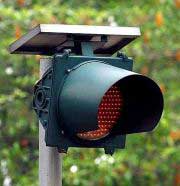To reduce electricity use for street lighting and public transport operations, several cities in Johor (Malaysia) are considering the solution of utilizing solar energy for these services.
 |
|
With solar panels on the roof, a bus station can generate electricity to power 2 light bulbs for 12 hours. (Image: The Star) |
The Johor Bahru City Council (Johor, Malaysia) has recently started using solar energy to operate some traffic lights, bus stations, and even park lights.
Kulai City (Johor) has also implemented solar energy for some of its bus stations.
Not only does this alternative energy source reduce electricity costs, but it also helps decrease the incidence of cable theft.
Currently, Johor Bahru has approximately 25,000 streetlights. In this city, the electricity used for public systems amounts to millions of RM each year.
So far, the Johor Bahru City Council has allocated about 100,000 RM (Malaysian ringgit) (nearly 400 million VND) to fund the solar energy project that was initiated four months ago.
 |
|
Solar-powered traffic lights. (Image: The Star) |
In addition to the 600,000 RM provided by the Ministry of Housing and Local Government, Johor Bahru City will install solar energy systems at around 60 to 70 bus stations throughout the city.
Currently, Johor Bahru is unable to install solar energy systems at all bus stations due to the high cost of solar energy production equipment.
Although the initial costs of the system are high, it is very durable and can be used for up to 10 years.
The solar panels on the bus station roofs only need to receive sunlight for 4 hours but can generate enough electricity to power 2 light bulbs for 12 hours, from 7 PM to 7 AM.
Minh Thương


















































